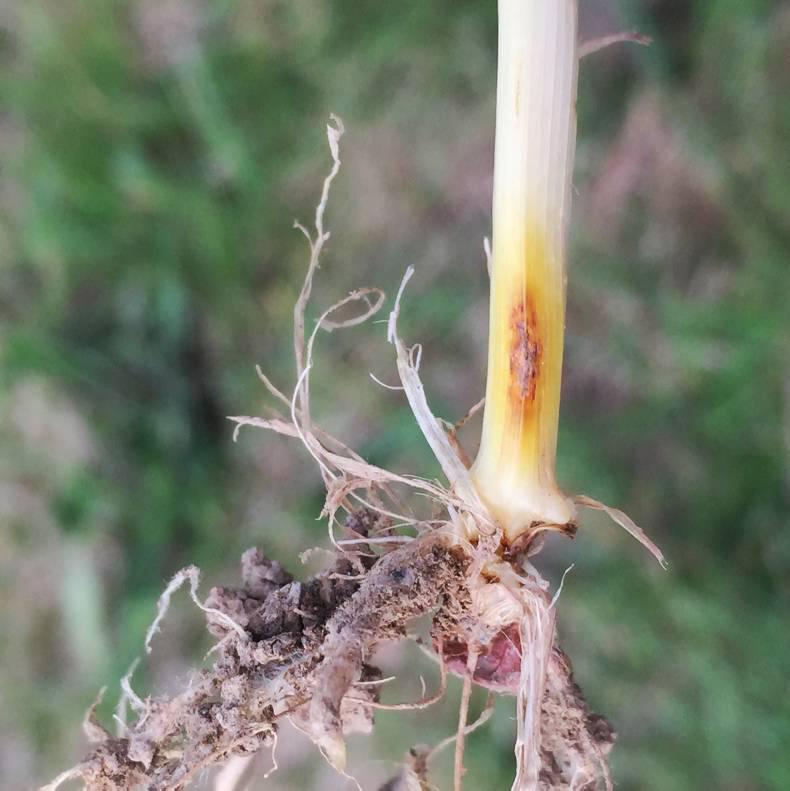Crops continued to respond to the nice warm conditions up to last weekend. However, the lowering of temperatures this week, especially at night, will slow growth once again. But these conditions may also help slow disease infection and development, especially of the wet weather diseases which had their first opportunity to infect following recent rain.
Rainfall amounts have once again been quite variable, with northern regions getting more than southern regions. Or at least I recorded 22mm in north Kildare while others in Cork recorded 2mm. The wet day and subsequent showers add to the risk of infection from diseases such as septoria, rhyncho and net blotch, but the presence of good drying between the showers suits the grower better than the disease.
I hear that there are real germination difficulties due to lack of moisture in some late-sown southern crops. Some areas have had virtually no rainfall since planting and where seedbeds were cloddy and seeds were not sown deeply enough, this was a potential risk.
Last weekend I was out in crops around north Kildare. There is a good mix of crops in this region, with a lot of spring barley planted along with winter cereals.
Spring barley
Virtually all spring barley crops in this area were later-sown, but seedbed conditions were generally good. Crops were at one leaf fully emerged (GS11) but they may well have a second leaf unfolded by the time you read this. In general, there were no weeds present and there is really nothing much that can be said about them.
But, just as I mentioned above with the dryness problems in parts of the south, there was a big patch in one field which had suffered poor establishment. The patch was much more cloddy and a big proportion of the seeds obviously ended up scattered among the clods in this area. And while the crop was rolled post-drilling, the seeds were still quite shallow.
While the large patch looked thin, it was obvious that most of the seeds had germinated initially. However, it looked like crows had come in post-germination and feasted on juice-filled seeds that were easily found. This led to the destruction of a lot of plants which lay wilting in the sunshine.
There was a bit of other grazing evident in some crops, but this was only incidental. It looked more like hares eating on the run than any big uniform attack.
Winter wheat
Last weekend, most wheat crops in this area appeared to be at a strong first-node stage, with the third-last leaf emerging. There was no sign of any foliar disease, but very clean eyespot popped up once again. Getting crops to the start of May virtually free of septoria is a definite plus, but we must assume that the pressure will begin to build from this point because it is highly unlikely to remain as dry as it was.
This crop was a bit on the thin side, but it had a number of good strong tillers to help compensate. There were quite a few cleavers throughout the field, with bad docks in one area. There was also a lot of grass weed present. It looked like the weeds had been sprayed recently and it is possible that Pacifica was the product used.
Other wheat crops I walked into were obviously min-tilled, partly after cereal and partly after rape. There were a few volunteer rape plants and poppies in these crops but they too had been recently sprayed as the weeds were folded over.
These crops were somewhat variable in density but they had tillered well and there was no sign of eyespot or foliar disease. The third-last leaf was about half-emerged at the time.
Beans and oats
Some oat crops I walked into were at second node and totally clean. There were some poppy and cleavers present, but they had been sprayed. While I saw none in this crop, M. nivale stem infection appears to be present this spring in many oat crops.
I walked into one interesting crop of spring beans which had been sown into burned-off grass using a strip drill, probably a Claydon. Emergence was a bit uneven across the field, with establishment virtually prevented in the wheel tracks used to apply herbicide after planting. The bean plants looked green and healthy but there were some holes present, possibly a result of slugs. The most obvious problem in the crop is the presence of a lot of scutch.






 This is a subscriber-only article
This is a subscriber-only article










SHARING OPTIONS: